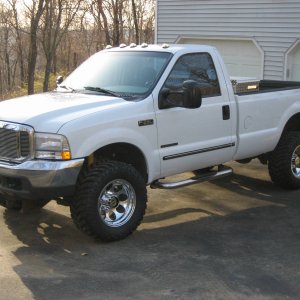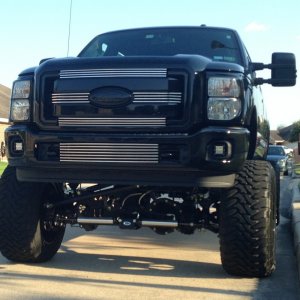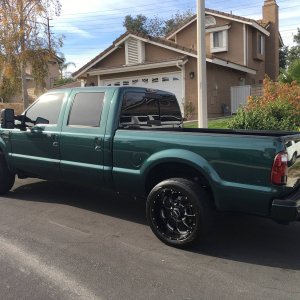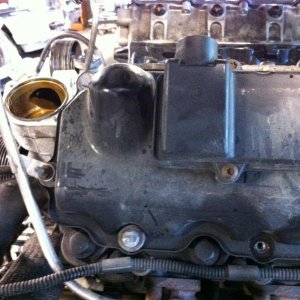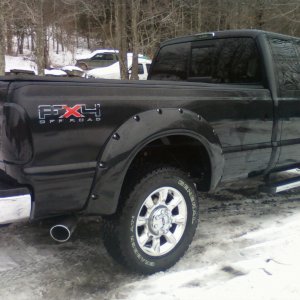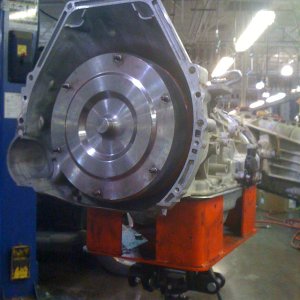djberg
New member
- Joined
- Mar 12, 2014
- Messages
- 113
- Reaction score
- 0
thanks to everyone contributing to this thread it's a super fun brain teaser for sure!
so last night i was bouncing this all around my head, and i came to a few conclusions... i may be completely wrong, or this could change up peoples thoughts on this topic.
1. machining the plunger(*for adding volume above the spill port, while typing this i added the "knub" into my thought process as well, this would add some volume to the 135cc, but i dont know how much), seems useless since at rest it sits above the spill port. and i personally think the spill ports purpose is to 1. faster easier finish to filling the plunger chamber when spring tension is at it's lightest pressure, 2. to create a momentum starter for the plunger to get moving with less pressure to get the full speed needed to push the stock amount of 135cc of fuel. now i dont know the i.d. of the inner hole of the spill port, but i would imagine it to be enough to move fuel easily, and the pressure in the outside of the barrel to be the same as the pressure of the fuel rail, so the pressure inside the barrel will be far more than the out side thus the fuel above the bottom of the spill port will mostly push back out until the spill port is "closed" then you will be building pressure. leaving you with the stock 135cc, until the machining of the length of the oil piston to actually change the volume at the longest point of the stroke.
2. so now that i believe the above to be true until some one gives info proving different, both lilpooh and frank have found the available area to add extra volume pushed, aka height difference between the top of the fuel plate and the hammer end of the plunger to be between .025-9" so using this info and by frank's statement that he has found them to be more commonly measured at .025"(.635mm), i will use that in my theory.
so we know that v=pi*r^2*h so filling in the blanks:
v=3.14*3.17^2*.635
thus v=20cc's
so with only internal machining and no shimming, and running the plunger to the point of "hitting the fuel plate" the max fuel you can get out of this is 155cc. but if you were to machine the "knub" at the bottom of the plunger that could buy you some volume, but no one has given the volume of that knub yet, that i have found anyways. so that knub/nipple thing could get us a bit more fuel area and change my theory.
also for clarification purposes, where are you guys measuring the longest point of the stroke from the edge of the plunger, or the center? aka the longest point with the knub not included in the measurement or the shortest?
two other questions i have, that some one might shed some light on.
1. what is the length of both springs fully compressed? this also could be a limiting factor to how far you can modify either side and affecting total volume.
2. what exactly is the measurement between the spill port edge and the top of the fuel plate? if you were to plug the spill port and move it up(to keep the same distance between the now modified plunger and the lowest point in the spill port) you could then modify the plunger and add volume that way.
so last night i was bouncing this all around my head, and i came to a few conclusions... i may be completely wrong, or this could change up peoples thoughts on this topic.
1. machining the plunger(*for adding volume above the spill port, while typing this i added the "knub" into my thought process as well, this would add some volume to the 135cc, but i dont know how much), seems useless since at rest it sits above the spill port. and i personally think the spill ports purpose is to 1. faster easier finish to filling the plunger chamber when spring tension is at it's lightest pressure, 2. to create a momentum starter for the plunger to get moving with less pressure to get the full speed needed to push the stock amount of 135cc of fuel. now i dont know the i.d. of the inner hole of the spill port, but i would imagine it to be enough to move fuel easily, and the pressure in the outside of the barrel to be the same as the pressure of the fuel rail, so the pressure inside the barrel will be far more than the out side thus the fuel above the bottom of the spill port will mostly push back out until the spill port is "closed" then you will be building pressure. leaving you with the stock 135cc, until the machining of the length of the oil piston to actually change the volume at the longest point of the stroke.
2. so now that i believe the above to be true until some one gives info proving different, both lilpooh and frank have found the available area to add extra volume pushed, aka height difference between the top of the fuel plate and the hammer end of the plunger to be between .025-9" so using this info and by frank's statement that he has found them to be more commonly measured at .025"(.635mm), i will use that in my theory.
so we know that v=pi*r^2*h so filling in the blanks:
v=3.14*3.17^2*.635
thus v=20cc's
so with only internal machining and no shimming, and running the plunger to the point of "hitting the fuel plate" the max fuel you can get out of this is 155cc. but if you were to machine the "knub" at the bottom of the plunger that could buy you some volume, but no one has given the volume of that knub yet, that i have found anyways. so that knub/nipple thing could get us a bit more fuel area and change my theory.
also for clarification purposes, where are you guys measuring the longest point of the stroke from the edge of the plunger, or the center? aka the longest point with the knub not included in the measurement or the shortest?
two other questions i have, that some one might shed some light on.
1. what is the length of both springs fully compressed? this also could be a limiting factor to how far you can modify either side and affecting total volume.
2. what exactly is the measurement between the spill port edge and the top of the fuel plate? if you were to plug the spill port and move it up(to keep the same distance between the now modified plunger and the lowest point in the spill port) you could then modify the plunger and add volume that way.
Last edited:



